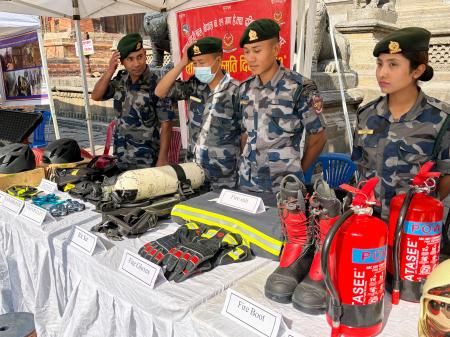Disaster Preparedness in Post-Earthquake Nepal: A Nation's Resilience
Nepal, a land of breathtaking beauty and rich culture, has unfortunately faced devastating earthquakes in recent history. The 2015 earthquake, in particular, highlighted the urgent need for robust disaster preparedness strategies. This article explores the current state of disaster preparedness in post-earthquake Nepal, examining both the challenges and the progress made. We'll delve into crucial aspects like building codes, community resilience, and the role of international aid.
The Scars Remain: Challenges in Nepal's Earthquake Recovery
The 2015 earthquake left an enduring impact on Nepal's infrastructure and psyche. While significant reconstruction efforts have taken place, several challenges hinder comprehensive disaster preparedness:
-
Fragile Infrastructure: Many buildings, especially in rural areas, still lack earthquake-resistant designs. This leaves communities vulnerable to future seismic activity. The slow pace of reconstruction, hampered by bureaucratic hurdles and funding limitations, exacerbates this risk.
-
Limited Resources: Nepal faces a persistent shortage of resources dedicated to disaster preparedness, including funding for training, equipment, and early warning systems. This lack of investment significantly weakens the nation's ability to respond effectively to future disasters.
-
Geographical Constraints: Nepal's mountainous terrain presents unique challenges. Reaching remote communities affected by earthquakes can be incredibly difficult, delaying essential aid and rescue operations. Improving road access and developing alternative communication methods are critical.
-
Community Awareness: While awareness of earthquake risks has increased, comprehensive disaster preparedness training and education are still lacking in many communities. This limits the effectiveness of evacuation plans and self-rescue strategies.
Building a More Resilient Future: Steps Towards Improved Preparedness
Despite the challenges, Nepal has made strides in enhancing its disaster preparedness capabilities:
-
Revised Building Codes: Nepal has updated its building codes to incorporate stricter earthquake-resistant design standards. Enforcing these codes effectively, however, remains a major challenge.
-
Community-Based Disaster Risk Reduction (CBDRR): Increasing focus is being placed on CBDRR initiatives, empowering local communities to actively participate in preparedness planning and response. This approach emphasizes local knowledge and fosters a sense of ownership.
-
Early Warning Systems: Efforts are underway to improve early warning systems, leveraging technology to provide timely alerts to at-risk populations. This includes enhancing seismic monitoring networks and developing effective communication strategies.
-
International Collaboration: International organizations and donor countries continue to provide crucial support in rebuilding infrastructure, training personnel, and strengthening institutional capacity for disaster response.
The Role of International Aid and NGOs
International aid plays a critical role in supporting Nepal's disaster preparedness efforts. Organizations like the UN and various NGOs contribute expertise, funding, and resources to:
-
Capacity Building: Training local professionals in earthquake engineering, disaster management, and search and rescue operations.
-
Infrastructure Development: Assisting in the reconstruction of earthquake-resistant housing and public facilities.
-
Community Engagement: Working with local communities to develop and implement effective disaster preparedness plans.
Looking Ahead: A Path to Sustainable Resilience
Nepal's journey towards sustainable disaster resilience is a long-term process requiring sustained commitment from the government, international partners, and the Nepali people themselves. Continuous investment in infrastructure, education, and community engagement is paramount. This includes:
-
Strengthening Institutional Capacity: Developing a more robust and coordinated disaster management system.
-
Investing in Education and Awareness: Promoting widespread understanding of earthquake risks and safety measures.
-
Ensuring Equitable Access to Resources: Prioritizing the needs of vulnerable communities.
Conclusion:
Disaster preparedness in post-earthquake Nepal is a complex and ongoing endeavor. While challenges remain, significant progress has been made. By fostering collaboration, investing wisely, and empowering communities, Nepal can build a more resilient future and mitigate the devastating impact of future earthquakes. This requires a sustained and concerted effort from all stakeholders. Learn more about how you can support Nepal's disaster preparedness efforts by researching reputable organizations involved in humanitarian aid and development.
